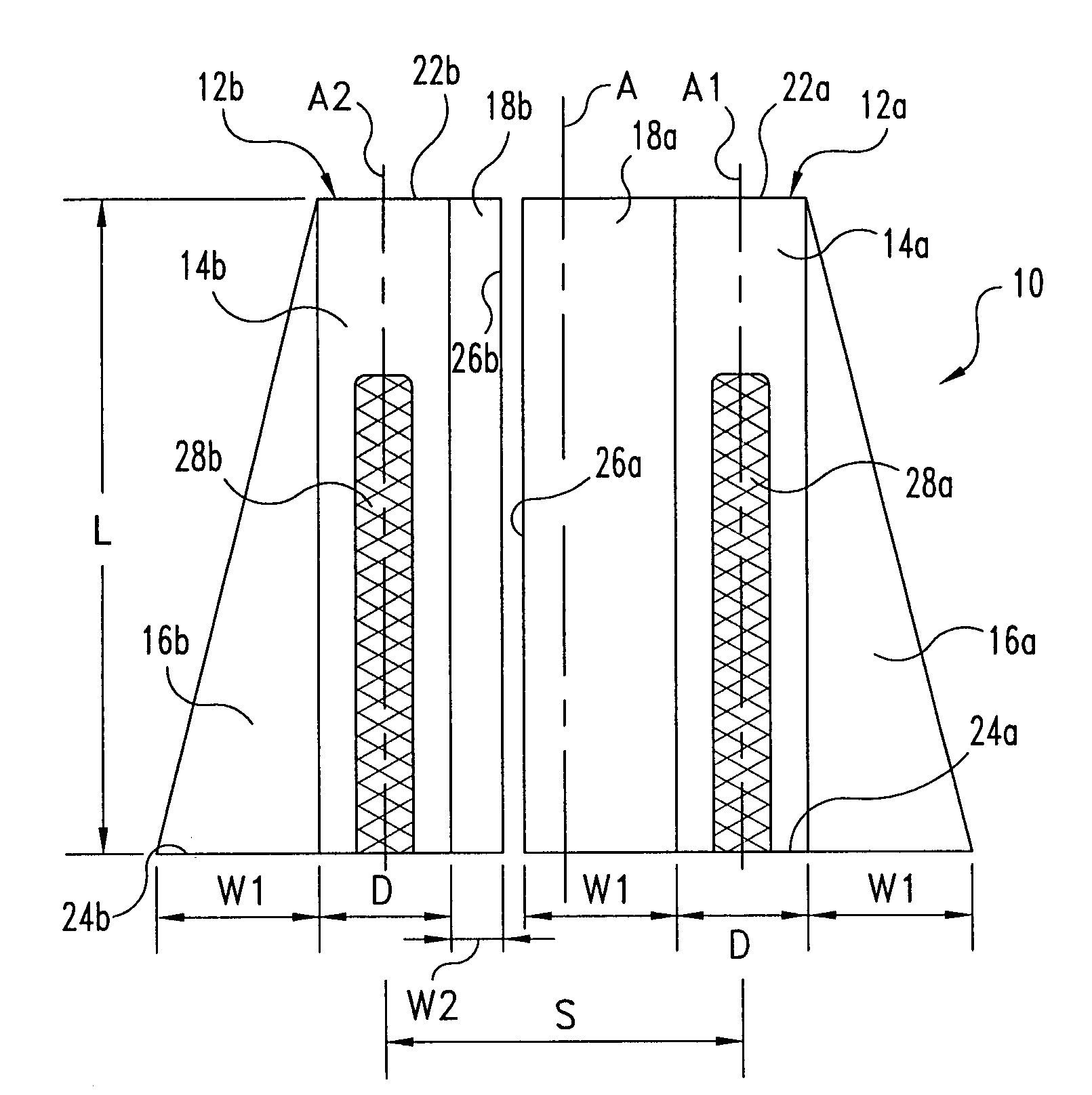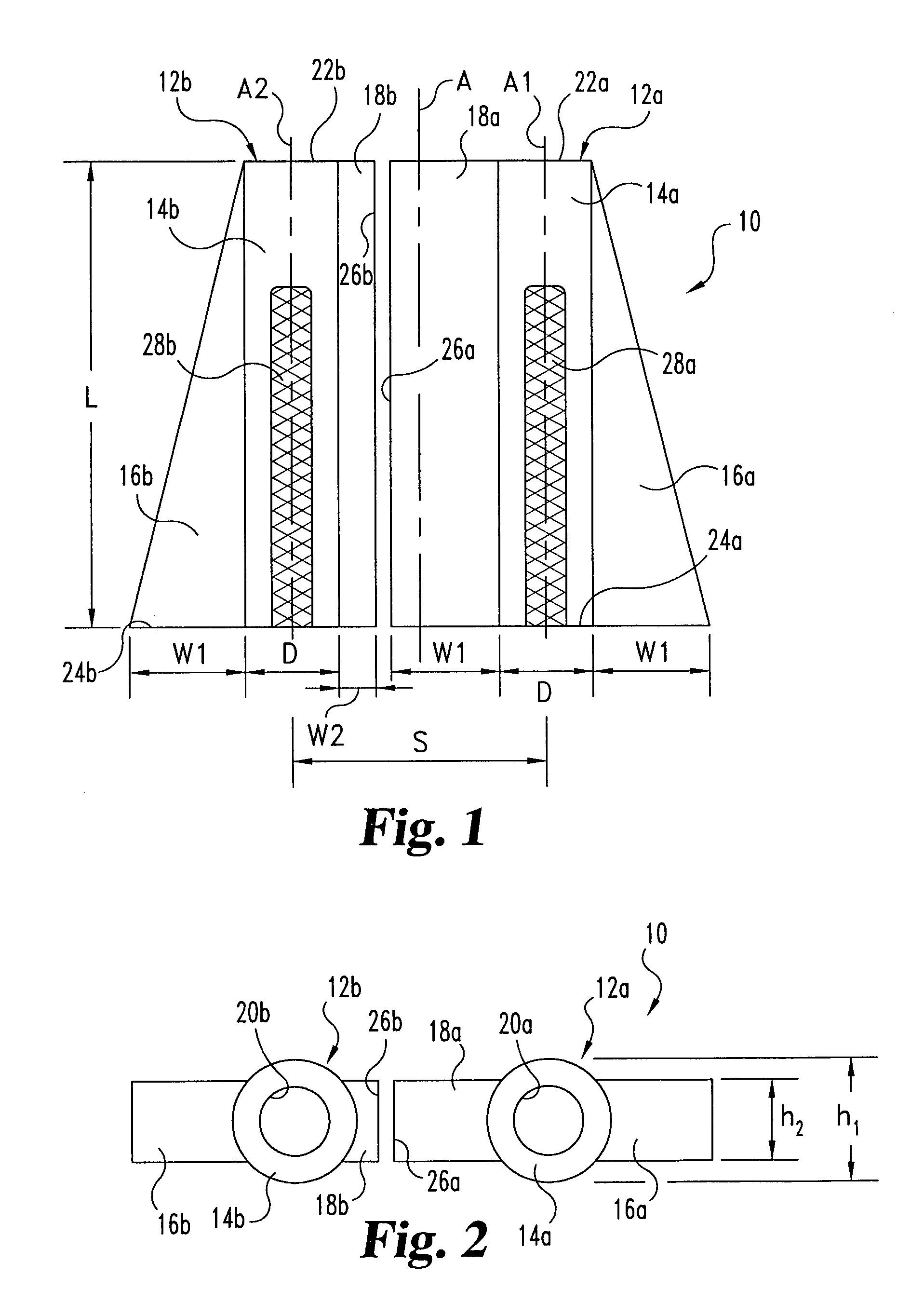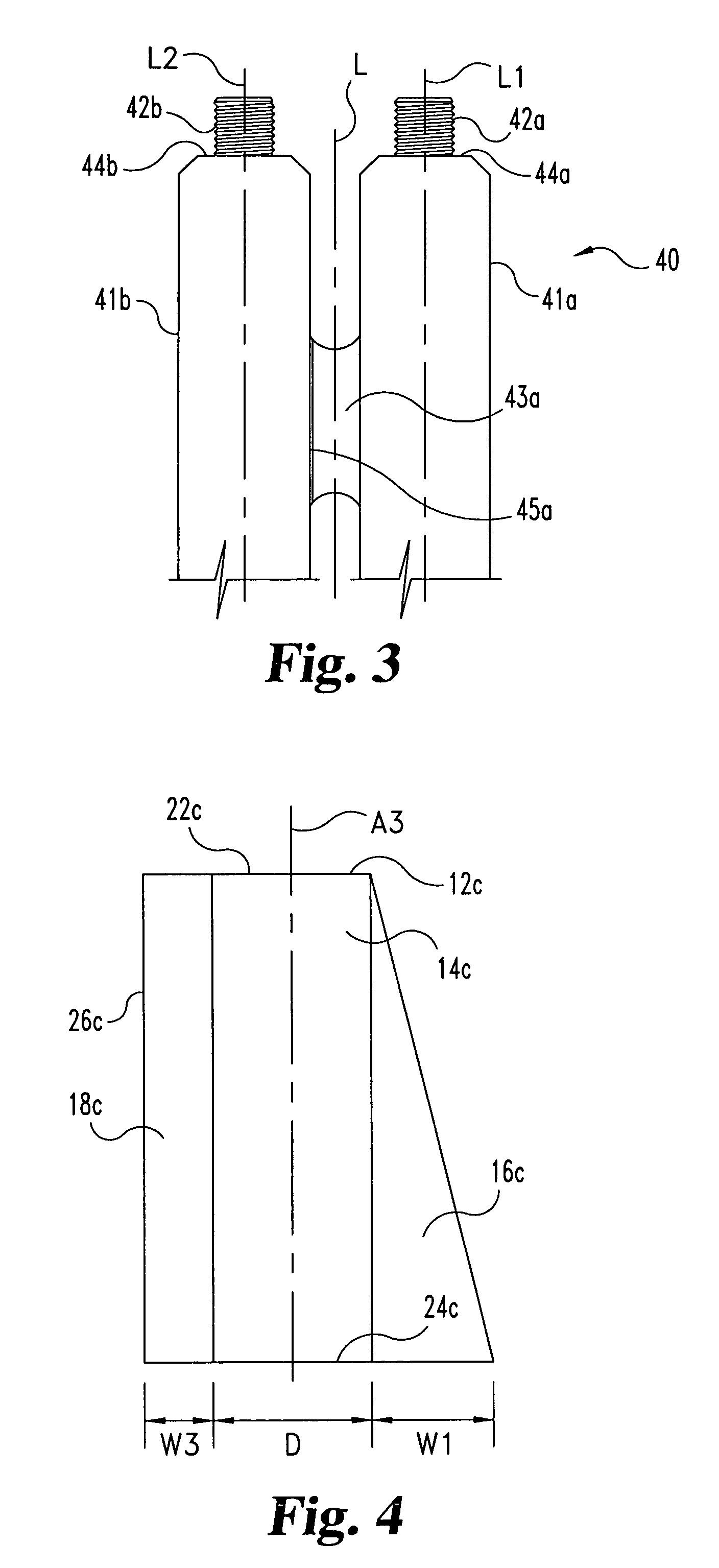Devices and methods for implanting fusion cages
a fusion cage and cage technology, applied in the field of spinal stabilization surgery, can solve the problems of implant migration into the vertebral body, the above-mentioned devices do not adequately address the problem of restoring and maintaining the normal anatomy of the fused spinal segment, and the posterior portion over-reaming is generally not well accepted
- Summary
- Abstract
- Description
- Claims
- Application Information
AI Technical Summary
Benefits of technology
Problems solved by technology
Method used
Image
Examples
Embodiment Construction
[0063]For the purposes of promoting an understanding of the principles of the invention, reference will now be made to the embodiments illustrated in the drawings and specific language will be used to describe the same. It will nevertheless be understood that no limitation of the scope of the invention is thereby intended. Any such alterations and further modifications in the illustrated devices, and any such further applications of the principles of the invention as illustrated therein are contemplated as would normally occur to one skilled in the art to which the invention relates.
[0064]The present invention relates generally to instruments, devices, and methods for performing vertebral interbody fusion. While it should be understood that the instruments and devices disclosed herein have many uses, it is particularly contemplated that they may be used to perform vertebral interbody fusion in an unreamed disc space with the endplates remaining completely or substantially intact. It...
PUM
 Login to View More
Login to View More Abstract
Description
Claims
Application Information
 Login to View More
Login to View More - R&D
- Intellectual Property
- Life Sciences
- Materials
- Tech Scout
- Unparalleled Data Quality
- Higher Quality Content
- 60% Fewer Hallucinations
Browse by: Latest US Patents, China's latest patents, Technical Efficacy Thesaurus, Application Domain, Technology Topic, Popular Technical Reports.
© 2025 PatSnap. All rights reserved.Legal|Privacy policy|Modern Slavery Act Transparency Statement|Sitemap|About US| Contact US: help@patsnap.com



